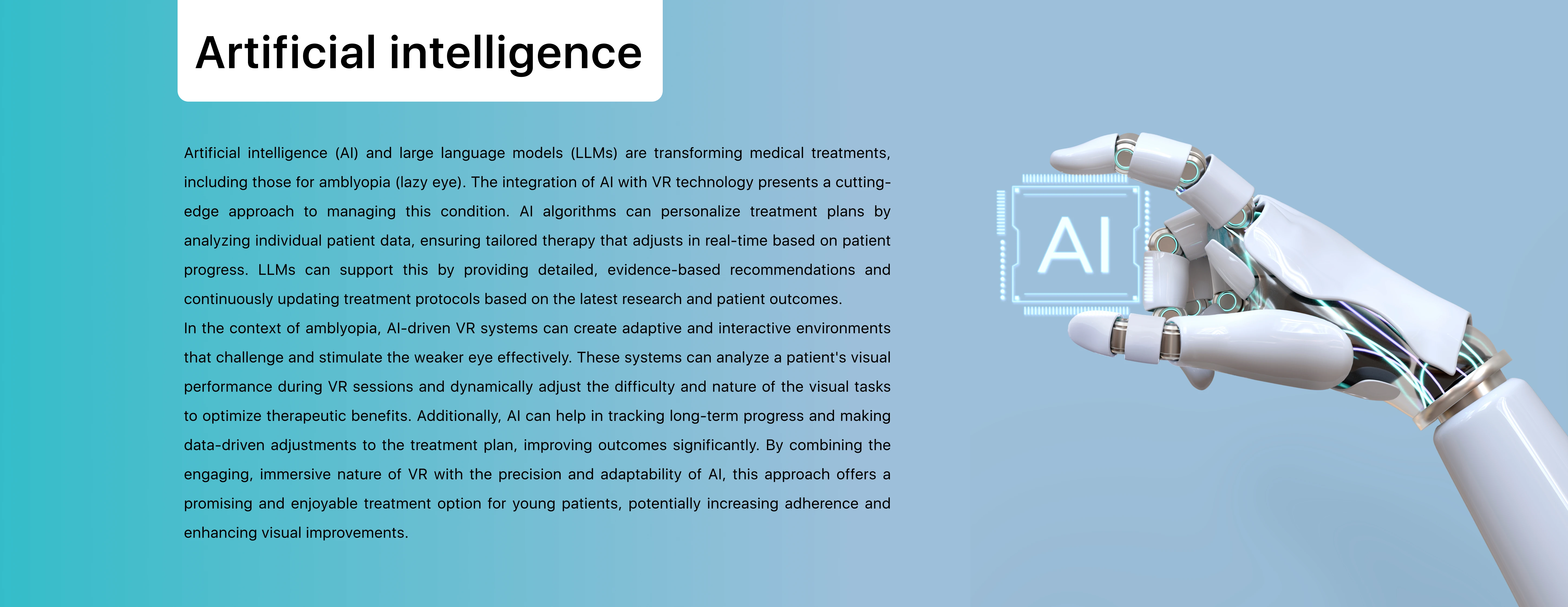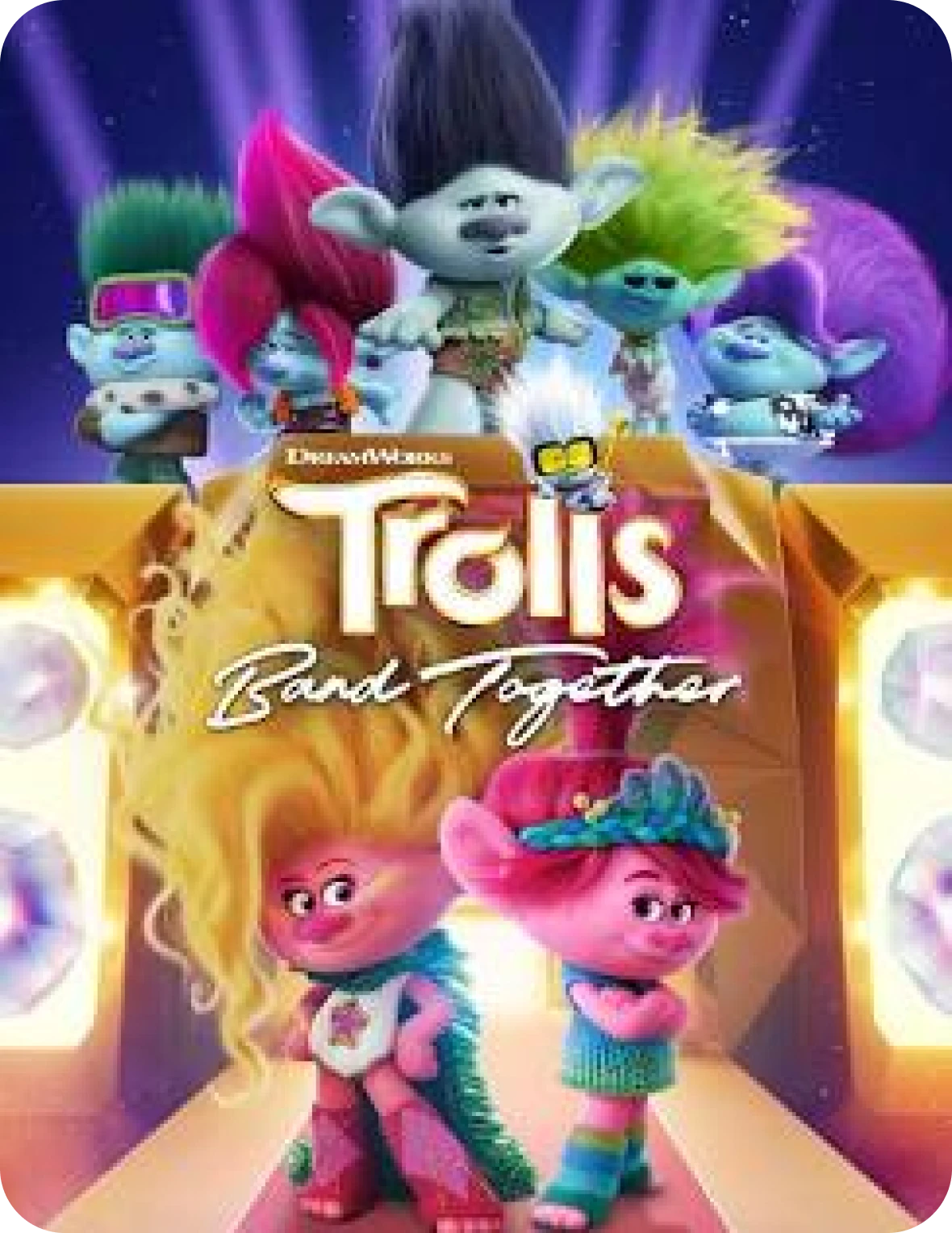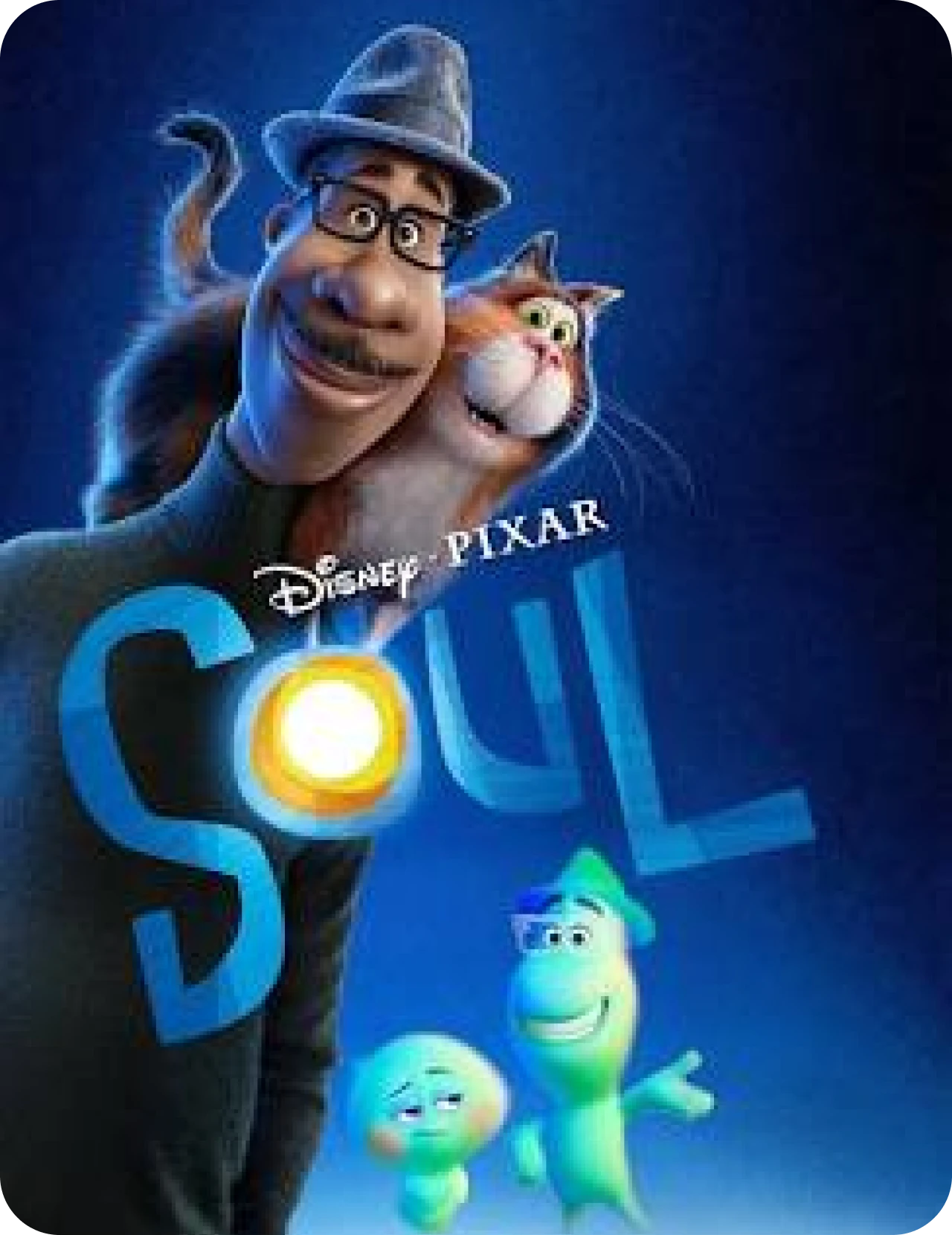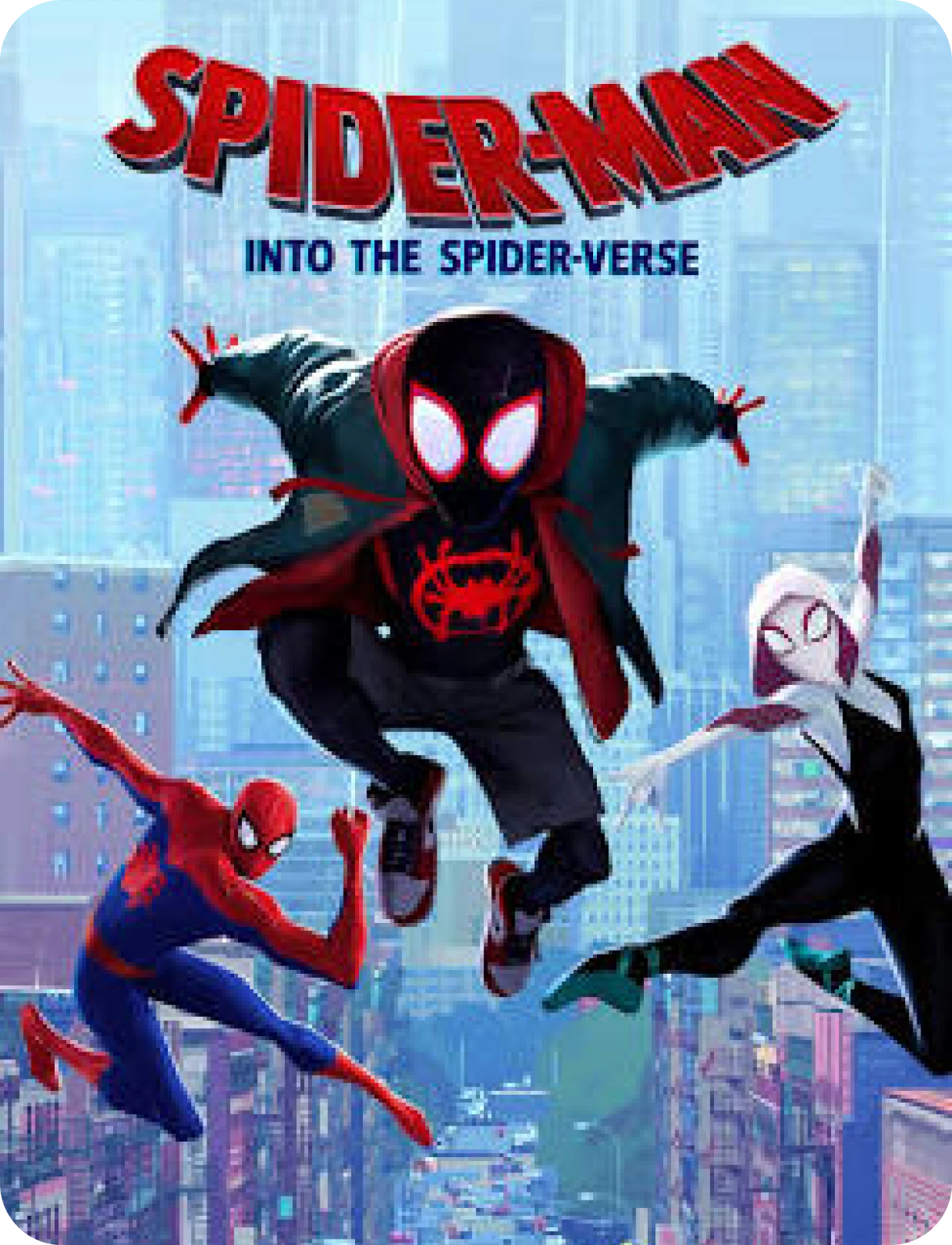

1 month FREE

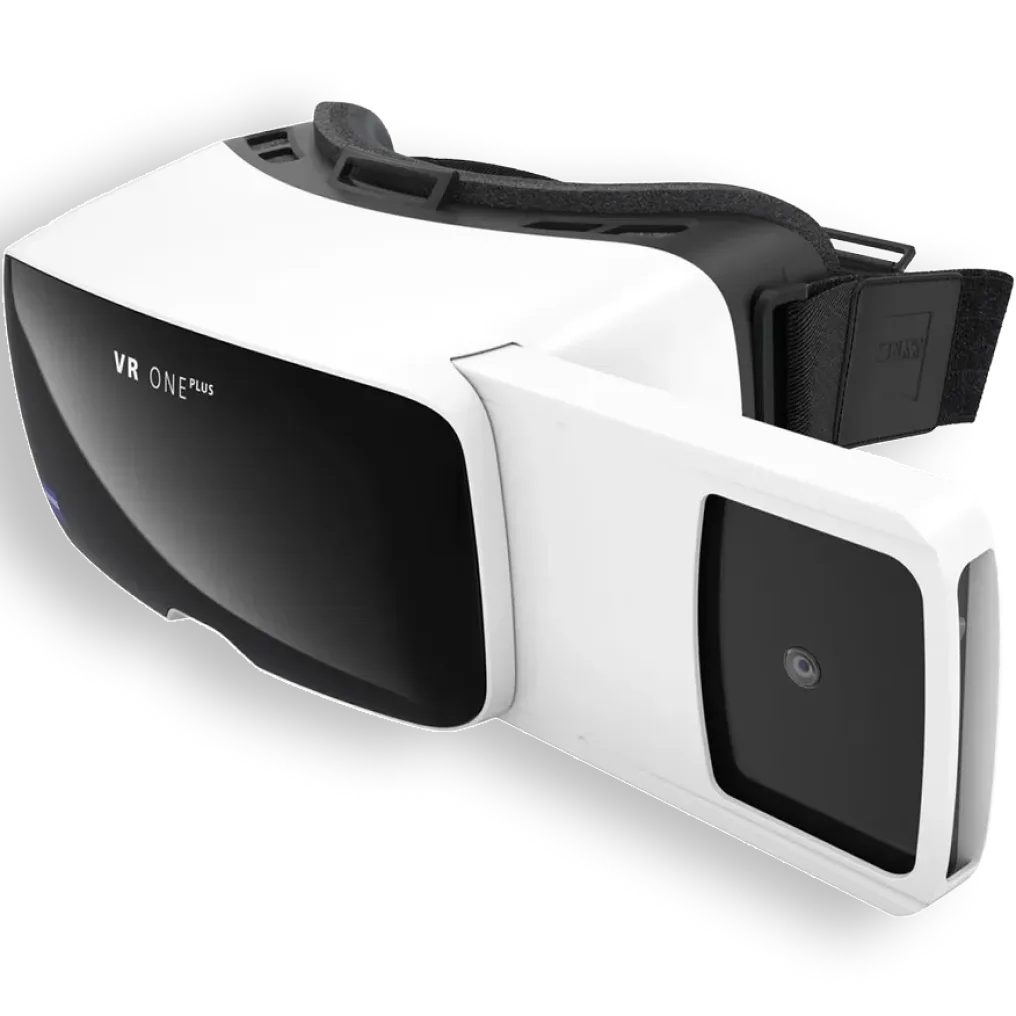
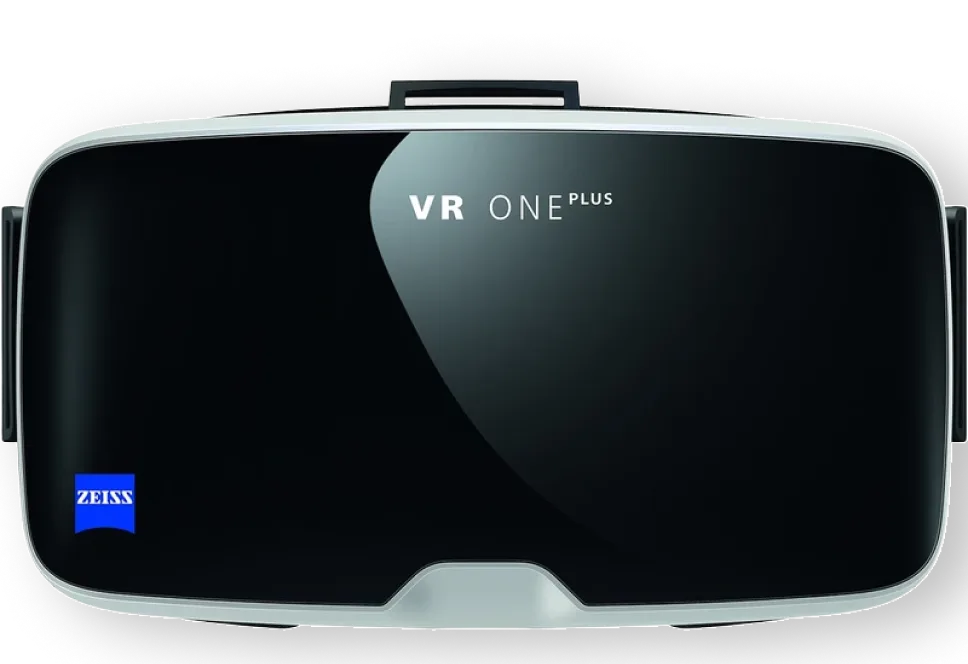
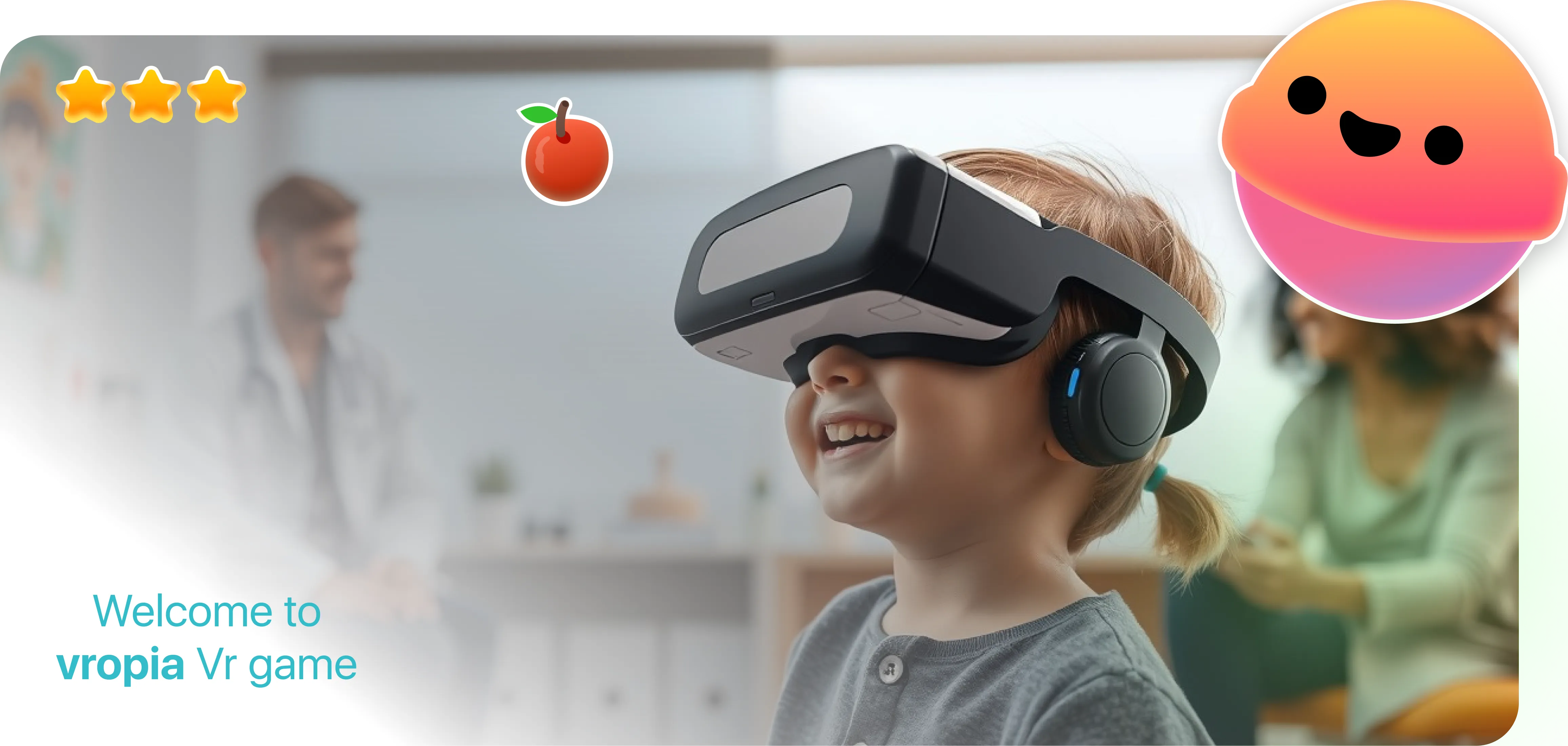

vropia is a web-based virtual reality (VR) software designed to treat amblyopia (lazy eye) in children. The product addresses the discomfort and social stigma associated with traditional treatment methods like patching by utilizing mobile VR headsets. vropia offers an engaging, gamified experience through cognitive and movement-based games, as well as video or animation viewing.
Scroll to learn more
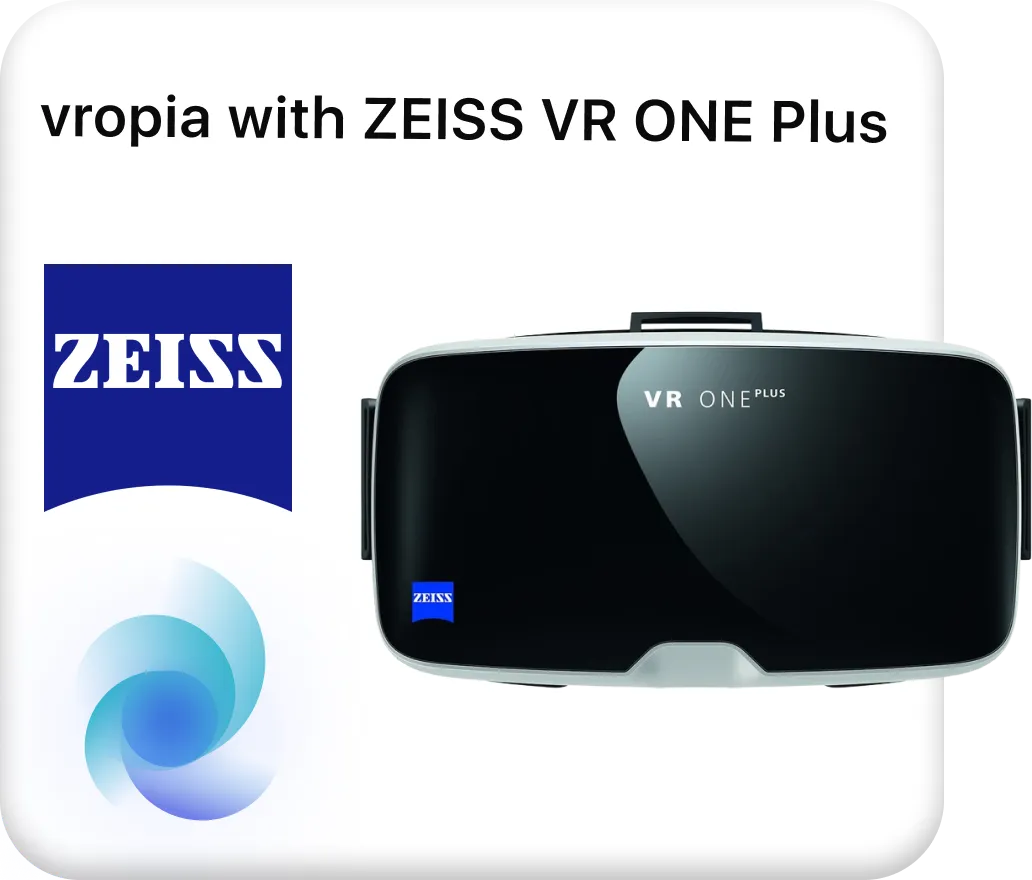
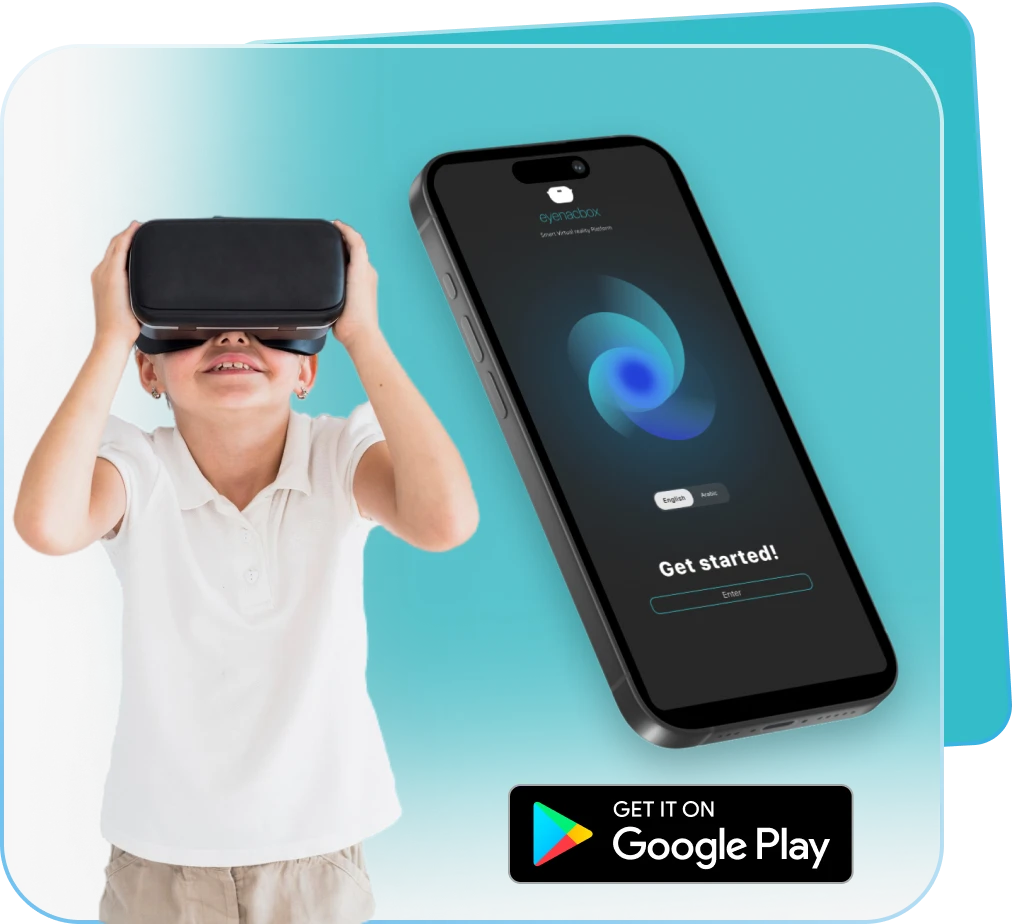
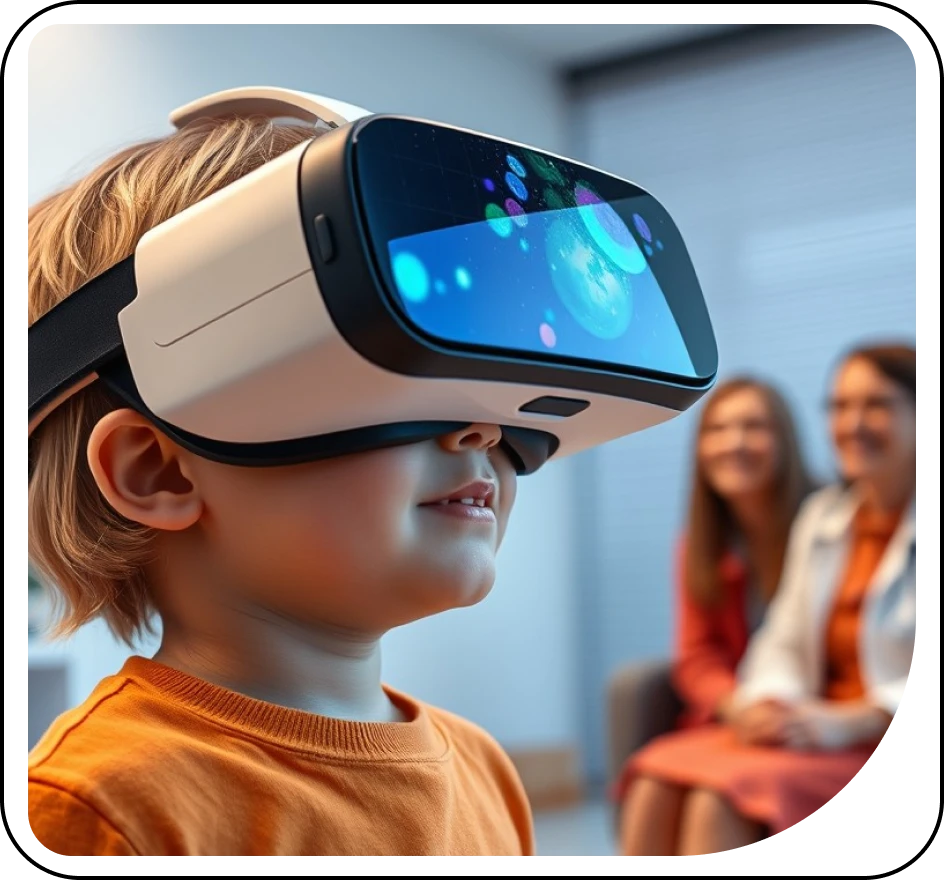
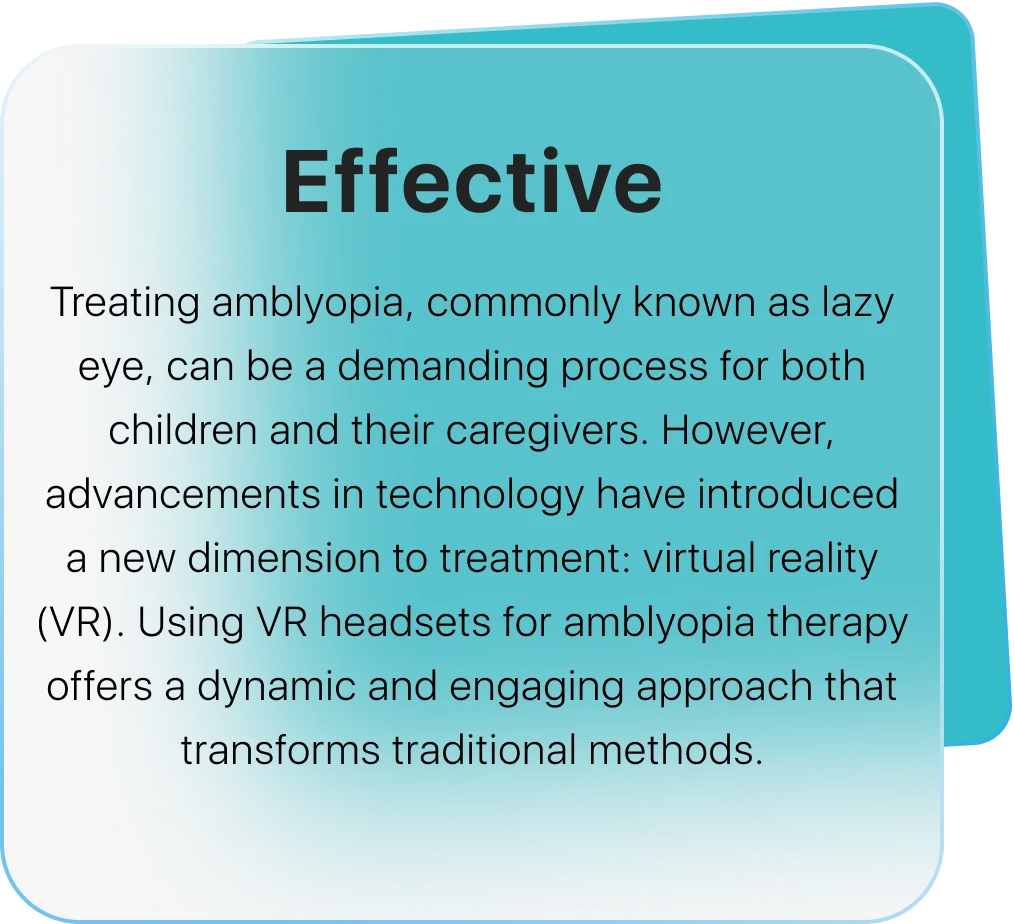
Our proprietary software includes 75 Animations —that’s many
Learning episodes of carefully curated content

vropia Platform
By integrating virtual reality into amblyopia treatment, therapy becomes a more engaging and enjoyable experience. This approach not only enhances the effectiveness of the treatment but also helps maintain children's interest and participation, leading to better outcomes and a more positive overall experience. For more details about how our VR solutions can make a difference, please get in touch with us
vropia Platform
By integrating virtual reality into amblyopia treatment, therapy becomes a more engaging and enjoyable experience. This approach not only enhances the effectiveness of the treatment but also helps maintain children's interest and participation, leading to better outcomes and a more positive overall experience. For more details about how our VR solutions can make a difference, please get in touch with us
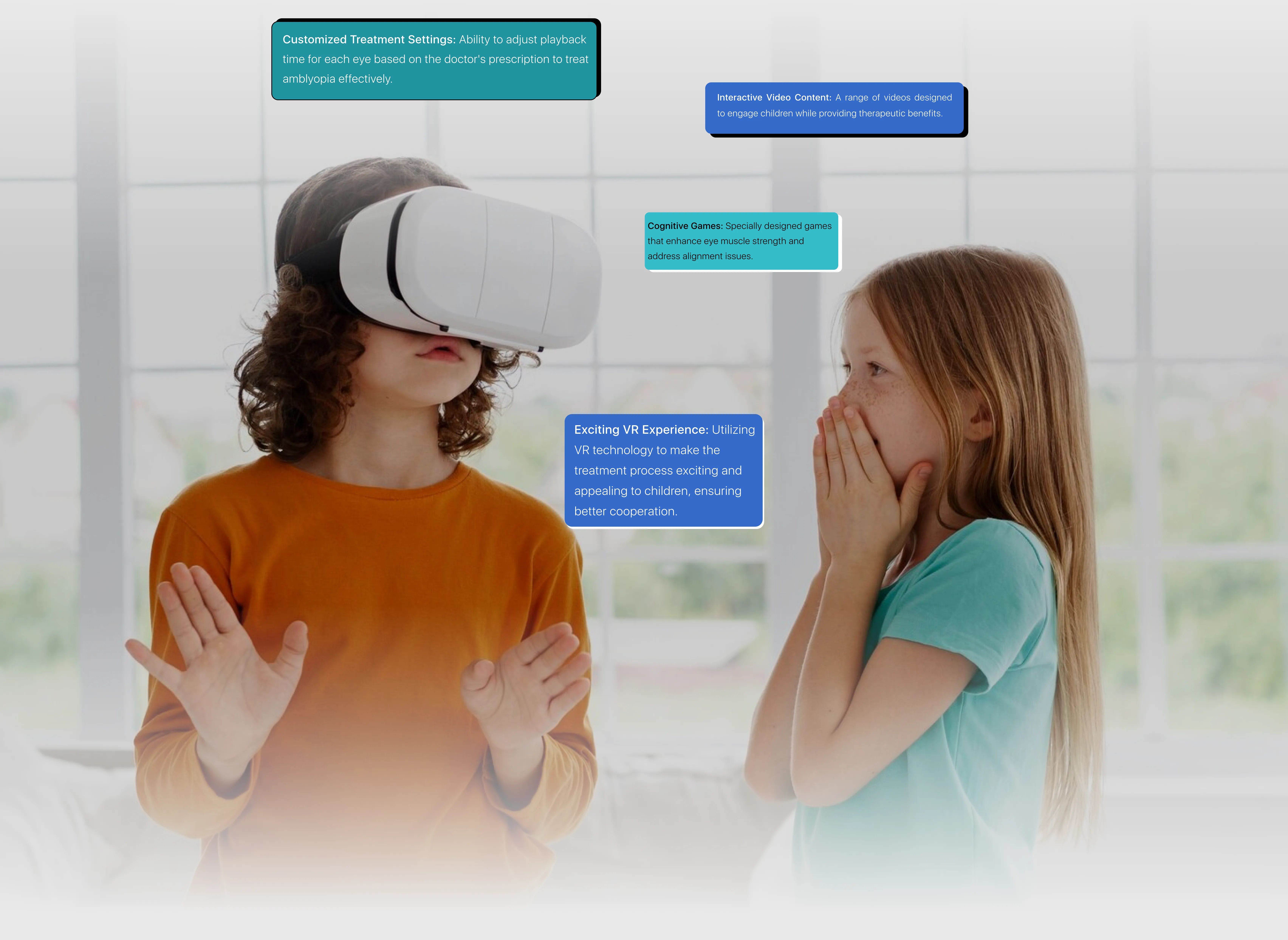
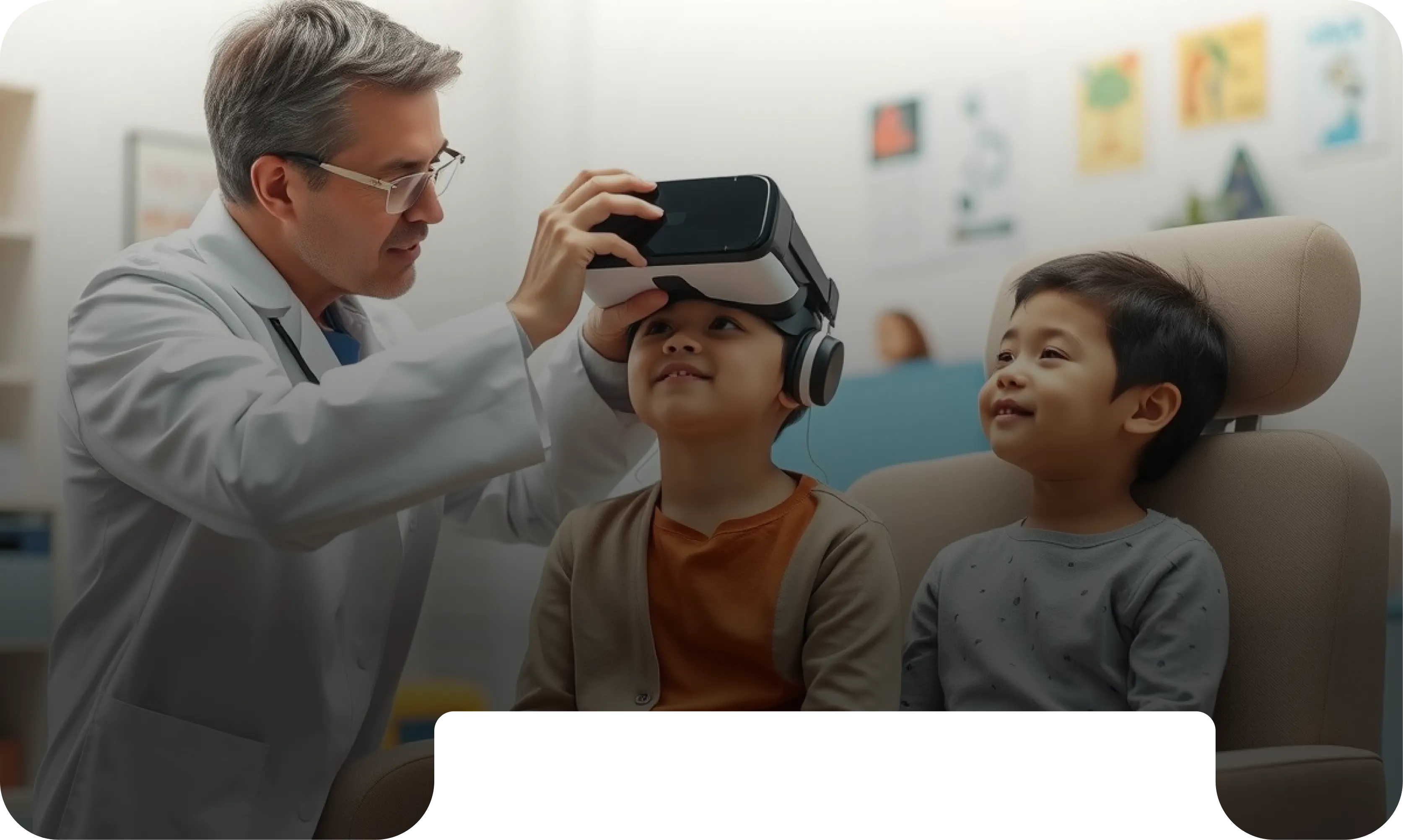
Vropia: Innovating Amblyopia Treatment for
Children with Virtual Reality
What is amblyopia?

Amblyopia (also called lazy eye) is a type of poor vision that usually happens in just 1 eye but less commonly in both eyes. It develops when there’s a breakdown in how the brain and the eye work together, and the brain can’t recognize the sight from 1 eye. Over time, the brain relies more and more on the other, stronger eye — while vision in the weaker eye gets worse. It’s called “lazy eye” because the stronger eye works better. But people with amblyopia are not lazy, and they can’t control the way their eyes work. Amblyopia starts in childhood, and it’s the most common cause of vision loss in kids. Up to 3 out of 100 children have it. The good news is that early treatment works well and usually prevents long-term vision problems.
Some kids are born with amblyopia and others develop it later in childhood. The chances of having amblyopia are higher in kids who: Were born early (premature) Were smaller than average at birth Have a family history of amblyopia, childhood cataracts, or other eye conditions Have developmental disabilities
What is Virtual Reality ?



Virtual reality (VR) technology has revolutionized various fields, including medicine, by providing immersive and interactive experiences that enhance both diagnosis and treatment processes. In medical applications, VR is used for surgical training, patient rehabilitation, pain management, and psychological therapies. This technology enables healthcare professionals to create realistic simulations that allow for precise and controlled environments, which are particularly useful in training scenarios and treatment planning. The immersive nature of VR helps in reducing anxiety and improving patient engagement, making it an effective tool in various therapeutic contexts. In the realm of pediatric ophthalmology, VR has shown significant promise, especially in treating amblyopia, commonly known as lazy eye. Traditional treatments for amblyopia, such as patching the dominant eye or using atropine drops, often face challenges related to patient compliance and comfort. VR offers a novel and engaging approach by using games and interactive activities that stimulate the weaker eye while keeping the patient entertained. Studies have demonstrated that VR-based treatments can improve visual acuity and binocular vision more effectively than conventional methods. This innovative approach not only enhances treatment outcomes but also ensures a more enjoyable experience for young patients, increasing adherence to therapy and ultimately leading to better long-term results (American Academy of Ophthalmology) (Cleveland Clinic).

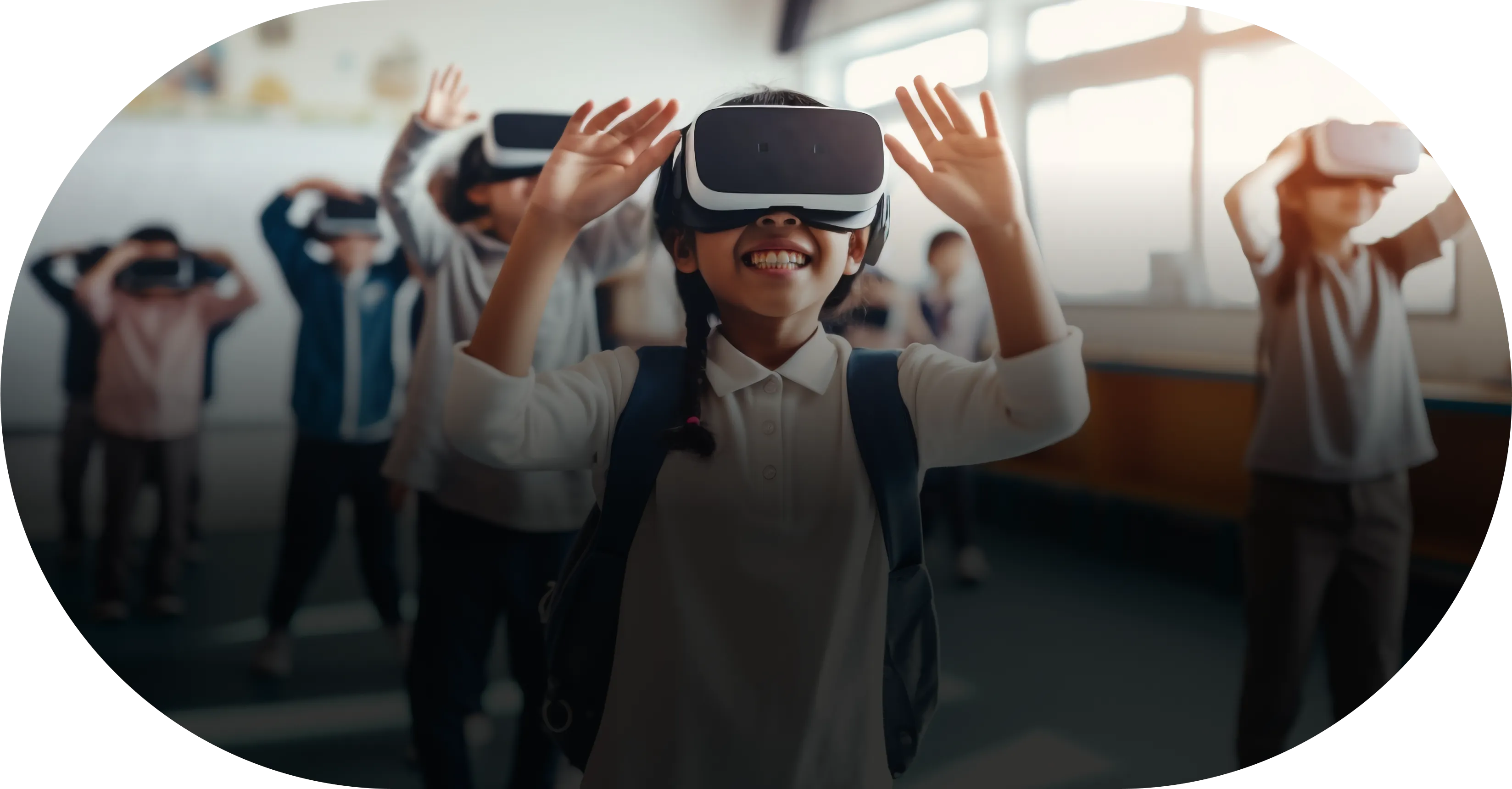
Using in Schools and Kindegratens

